If you visit the Netherlands, you likely see many Dutch windmills and may even visit the UNESCO world heritage site “de Kinderdijk”. Have you ever wondered why there are so many windmills in the Netherlands? Here, we show you how to explore the Kinderdijk and explain why there are so many windmills in the Netherlands.
Battling water – the role of Dutch windmills like the ones of Kinderdijk
The Dutch are fighting the water for centuries: battling the sea, swamps and rivers. In the Netherlands, we have specialized governmental organisations to do so: water boards and Rijkswaterstaat. Here, we only focus on windmills and why the Netherlands are full of them. The Netherlands has about 4000 polders, which are areas surrounded by some kind of flood defense in which humans can artificially manage the water level. The Dutch created polders in lakes, peat swamps and seas. A famous example is the polder de Beemster established in 1612, nowadays known for its UNSECO World Heritage status, and because of its cheese. Another one is the polder Alblasserwaard, where the Kinderdijk is located.
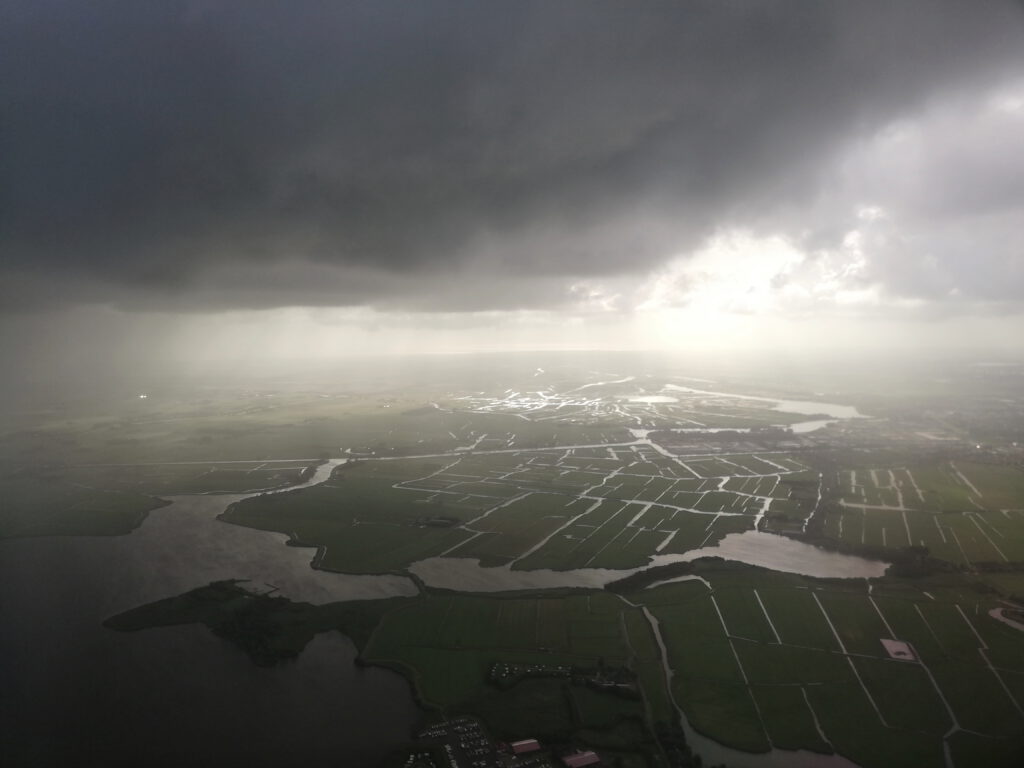
More recently in the 1960s, the Dutch created a new province of 2.412 km2 named Flevoland, in a freshwater lake, which previously was an inland see (yes, sounds crazy). In a polder, the water level is typically lower than the surrounding area. This means that water will flow to the lowest point in the landscape. To keep their feet dry, the Dutch had to pump out the water. How to do this without steam power or electricity? Indeed, the Dutch constructed windmills to harness the endless power of the wind.
What makes Dutch windmills and the UNESCO world heritage Kinderdijk special?
The Kinderdijk is a famous tourist attraction and has the status of UNESCO World Heritage. Why are a couple of windmills that important? To answer this question, we have to dive into the history of the area.
Thousand years ago, the area of Alblasserwaard was a large peatswamp, embedded by rivers and the sea. Humans only visited the area in summer, when the water was very low. The first inhabitants build their houses on high sand ridges, relatively safe from the water.
As time progressed, the western part of the Netherlands developed and more people fancied to live in this region. To facilitate this, humans constructed ring dikes, ditches and canals to keep the water at bay in the lower areas. From the lowest point of the area, de Kinderdijk, the water was let into the river. However, due to land subsidence, this became an issue as the land lay lower than the river. In the 18th century, the Dutch overcame this by constructing 20 windmills. These pumped the water into the river. In 1968, the Dutch installed a steam machine to pump out the water. Currently, it is possible to visit the area and see 19 original windmills (even from the inside).
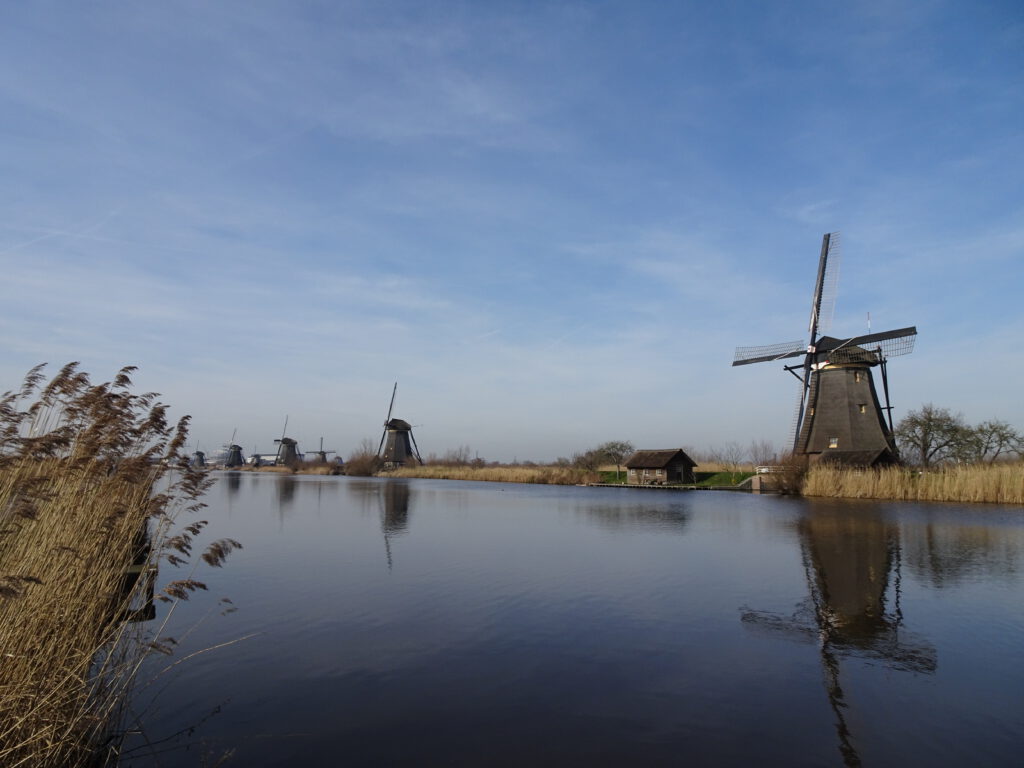
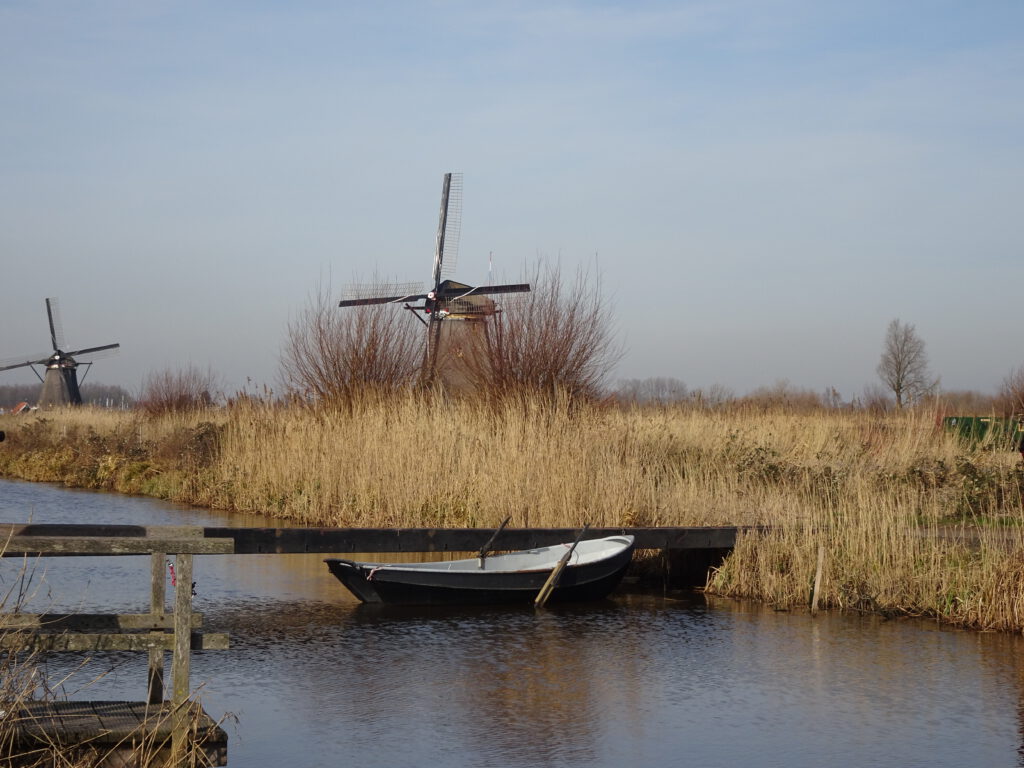
How to reach the Dutch windmills of Kinderdijk
You can reach the Kinderdijk by water bus, bus, bicycle or car! If you stay in Rotterdam, we highly recommend you to use the water bus. The water bus is easy, cheap and a great experience. The trip will take about 30 min, which makes the Kinderdijk a perfect day-trip from Rotterdam. You can visit the site year-round, because every season has its charm. After arrival, you can buy an entrance ticket to enter windmills, for an audio or boat tour. Furthermore, you can cycle or walk for free on “de Molenkade Nederwaard”, which leads you from the entrance of the Kinderdijk to Alblasserdam.
What to do at the Kinderdijk, UNESCO world heritage
At the Kinderdijk you can do multiple things: hiking, bicycling, exploring the area by water (in winter if you are lucky, you can ice skate here) or enjoy a cup of coffee at the visiting center. During our trip, we walked in the polder, enjoyed the windmill-views and the lush-green meadows. Furthermore, three windmills are open to public. Each wind mill has its own “theme”: in the museum-mill Blokweer you can explore how life was in the 1950s, in museum-mill Nederwaard you can explore the history of family Hoek that lived here for generations, while Overwaard can only be visited in combination with the boat tour and is all about techniques. Do you want to see something else than windmills, check out the Wisboom pumping station, which was built in 1868!
If you want to visit a very recent Dutch land-reclamation project, visit the Marker Wadden. If you want to visit a relatively unspoiled peat swamp, you should check out National Park Weerribben-Wieden!
Have you been to Kinderdijk? How did you explore the Dutch windmills?
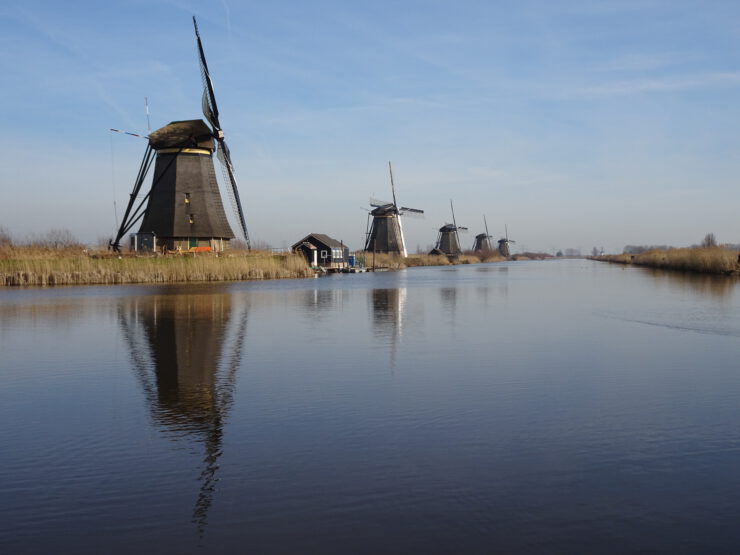
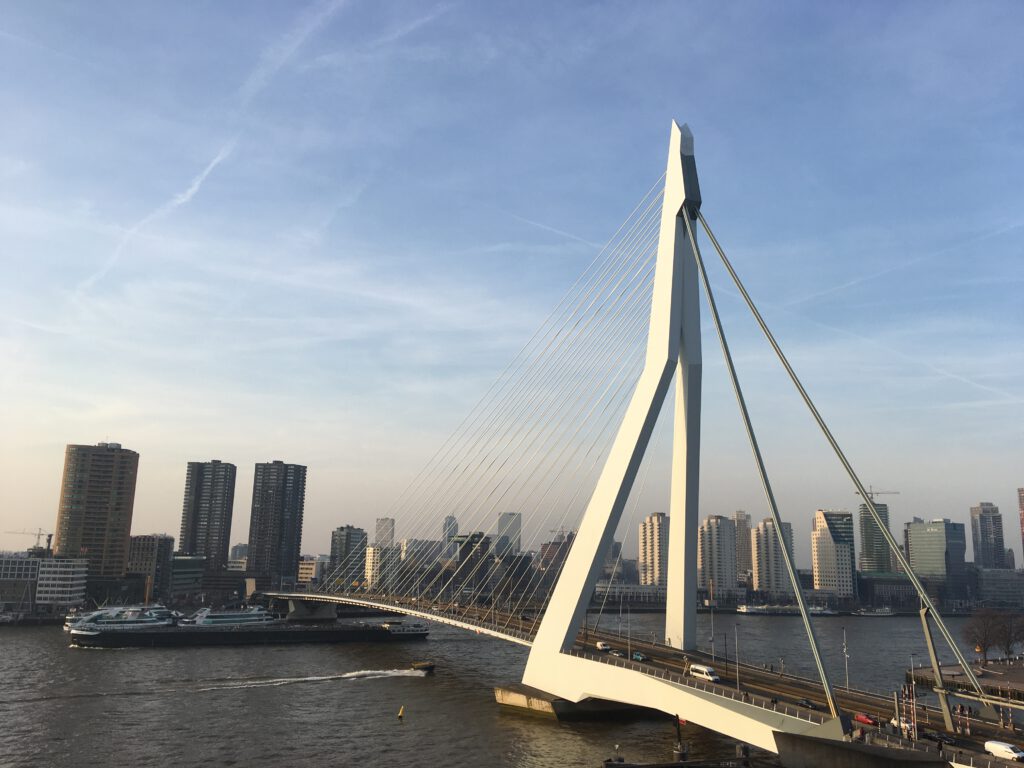
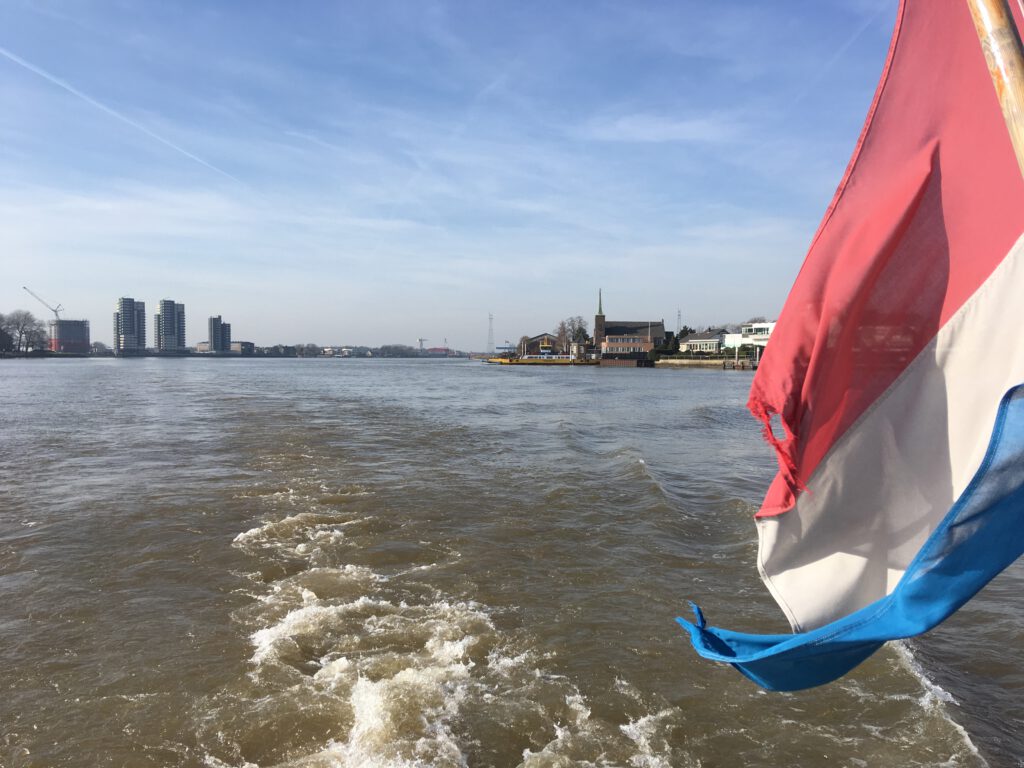
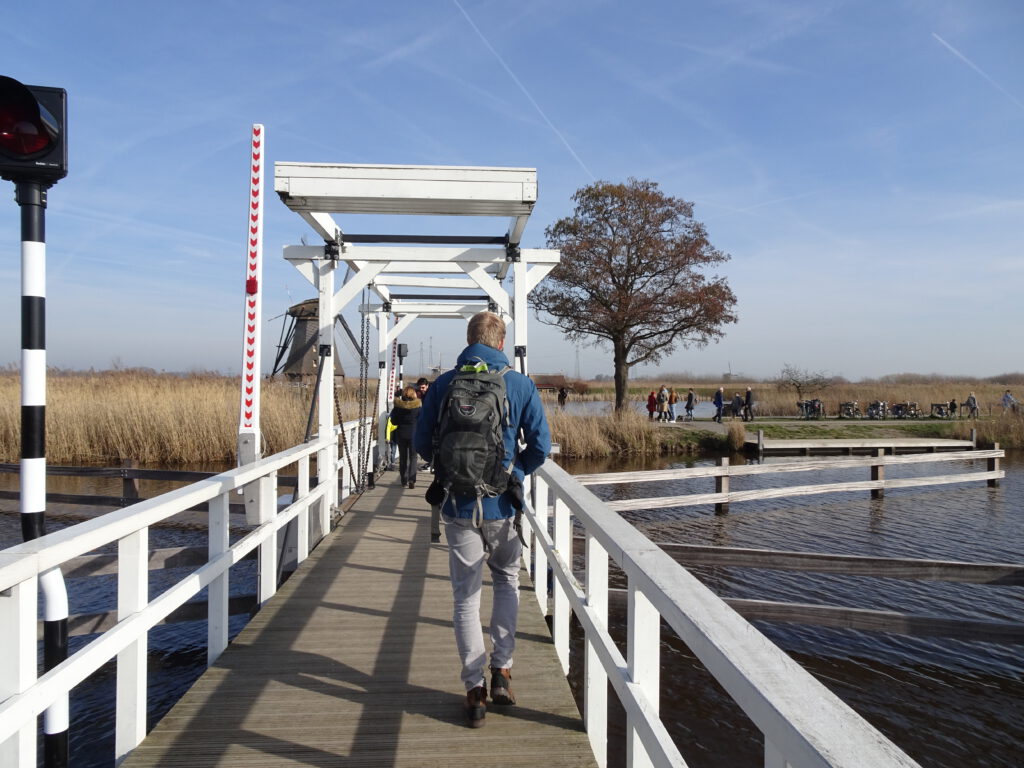
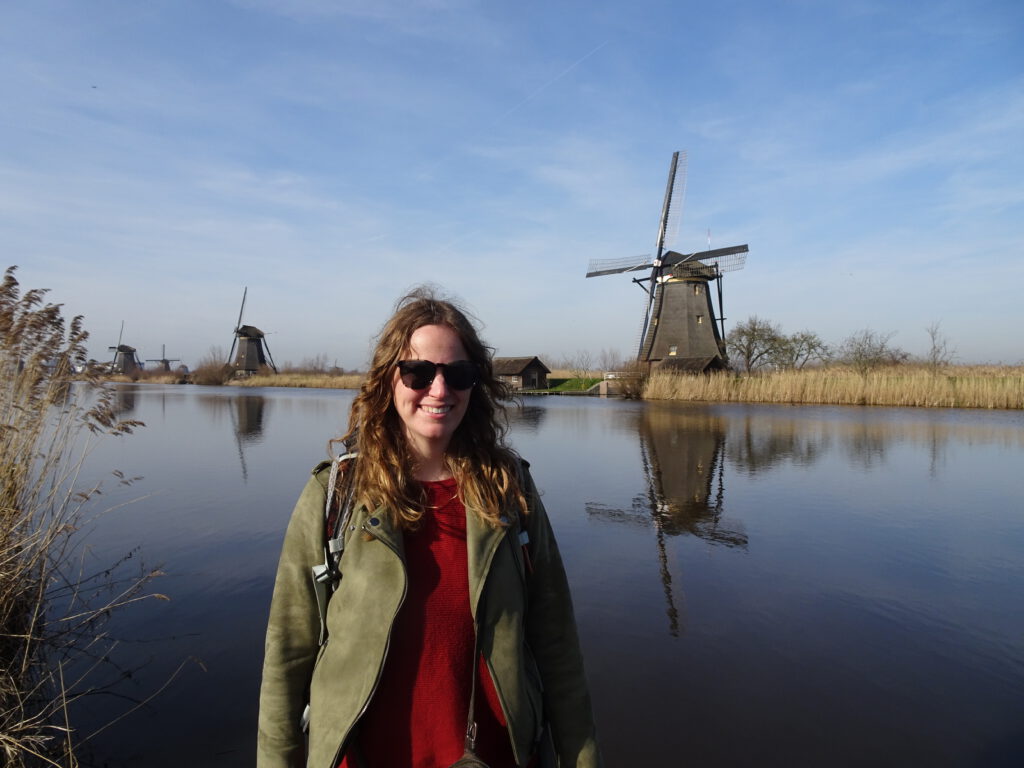
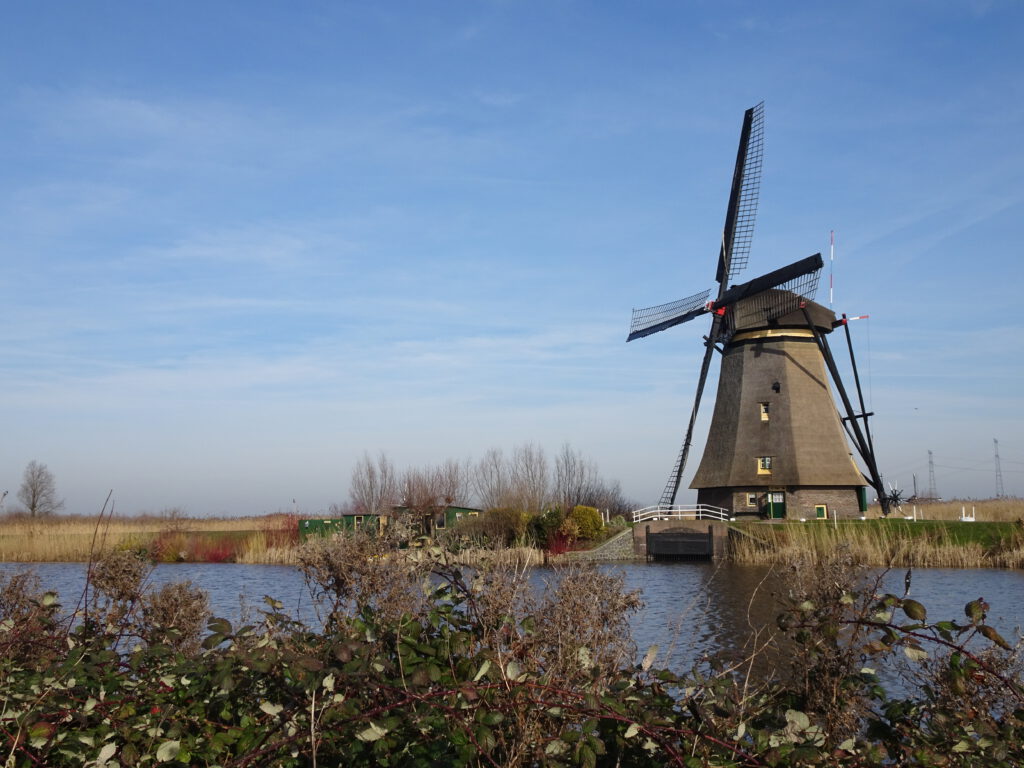
Interessant om te lezen.